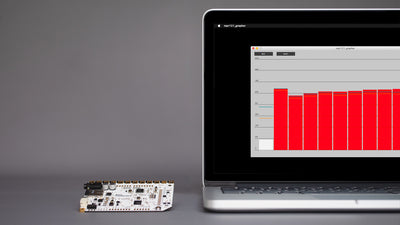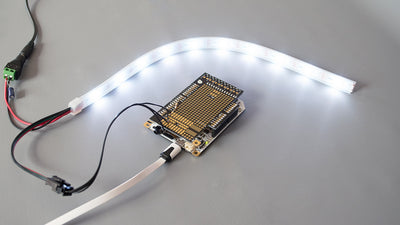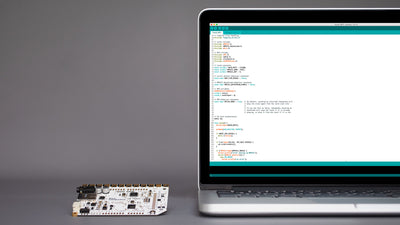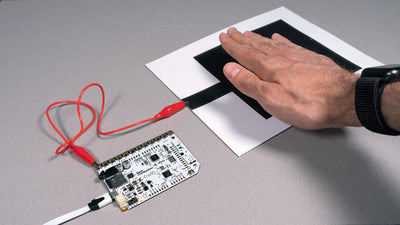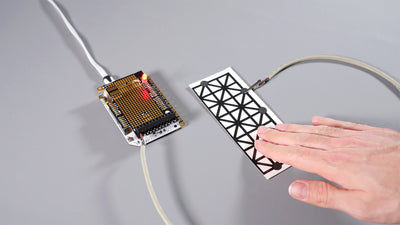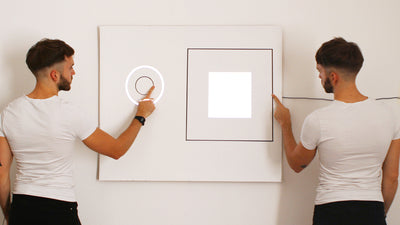Which Speakers To Use With The Touch Board

Fill the room with sound by adding speakers to your Touch Board project
With the Touch Board, you can make musical instruments out of everyday objects, sound-based alarms, or interactive sound murals. But listening on headphones isn't as fun as projecting the sound into the whole room. Depending on your project's needs and scale, there are a few different options when it comes to speakers.
We love it when you share your projects! Post your project on Instagram, YouTube, or Twitter, and make sure to tag @bareconductive or use #bareconductive. You can also send your videos and photos to info@bareconductive.com so we can post them on our site for the world to see.
Portable speakers
The Touch Board Starter Kit comes with portable speakers, which can be charged and then plugged into the Touch Board. Portable speakers are great when you are making small or portable installations with the Touch Board. They typically come with a cable built-in, or one included with the original packaging.

Speakers with AUX input
If you are making large scale installation and you need your speakers permanently set up, you can also use speakers with a 3.5mm AUX input. Simply use a 3.5mm AUX cable to connect the speakers to the Touch Board. The AUX input is typically female, so you need a AUX cable that has a male 3.5mm connection on both ends.

Bluetooth speakers
Using Bluetooth speakers is great when you need to make a modular project with the Touch Board. It allows you to hide the Touch Board within a casing, and connect to the speakers wirelessly. It's quite straightforward, all you need to do is connect a Bluetooth transmitter to the Touch Board and pair it with the Bluetooth speakers.
In the image below, we are using the BTT005 transmitter, but you can use any Bluetooth transmitter that has an AUX connection with a 3.5mm male audio jack. Connect the Bluetooth transmitter to the Touch Board as shown below and turn it into pairing mode. Turn on Bluetooth speakers and make sure they are in pairing mode too. Depending on your devices, the transmitter and the speakers should pair up with each other. If they don't, refer to the device's instructions.

Pi Cap considerations
Our Pi Cap was designed with a 3.5mm audio jack to help to add audio to Raspberry Pi Zero projects. If you're using a Pi Zero, then the Pi Cap is a great way to get audio out of your project. But if you're using a Pi with an audio jack already built-in, then you can rely on your Pi to provide audio out.


